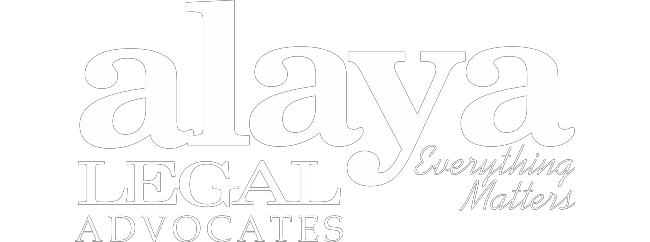Alaya Legal presents its fourteenth issue of the Oil and Gas: Ezine to its Readers. Web-links are provided for ready access to certain reference material. The contents are presented with a view to allow comprehensive update in a systematic manner, from the legal perspective.
Reference Material
- 14th Report of the Standing committee on Petroleum and Natural Gas – Production of Coal Bed and Methane, August 201 may be accessed at http://164.100.47.193/lsscommittee/Petroleum%20&%20Natural%20Gas/16_Petroleum_And_Natural_Gas_14.pdf
Ministry of Petroleum and Natural Gas has discontinues its ‘subsidized imported gas schemes’
April 04, 2017
The Ministry of Petroleum and Natural Gas has discontinued its ‘subsidized imported gas schemes’. Under the said scheme imported gas were offered at subsidised rates to stranded and underutilised gas power projects. Reportedly, Ministry of Petroleum and Natural Gas may recommence this scheme depending upon requirement and necessity of the stakeholders.
Cairn India merges with Vedanta Limited
April 11, 2017
The merger between Cairn India Limited, one of the largest independent oil and gas exploration and production companies in India and Vedanta Limited was officiated pursuant to the effectiveness of the Scheme of Arrangement. Shares of Vedanta Limited are to be issued to the Shareholders of Cairn India, while no shares will be issued to Vedanta or any of its subsidiaries for their shareholding in Cairn India.
Reliance commences commercial production of coal bed methane in Sohagpur
April 21, 2017
Reliance Industries Limited commenced commercial production from its Coal Bed Methane (CBM) block SP(West)–CBM–2001/1 from 24th March 2017 and is currently supplying CBM for commissioning the Shahdol Phulpur Pipeline (SHPPL). CBM is an environmental friendly natural gas extracted from coal-bed and has become an important source of unconventional gas in many parts of the world. The production from these CBM fields will make RIL among the largest unconventional natural gas producers in India.
Hydrocarbon discoveries in the Moran Petroleum Mining Lease (PML) in the upper Assam Basin by OIL
May 1, 2017
Oil India Limited through its exploratory efforts has made 2(two) Hydrocarbon Discoveries in the Moran Petroleum Mining Lease (PML) in the Upper Assam Basin in the month of April 2017 in the wells Borbhuibil-1and Lakwagaon-1.
Schlumberger Launches New Fluid Mapping-While-Drilling Service
May 3, 2017
Schlumberger launched the new SpectraSphere fluid mapping-while-drilling service at the 2017 Offshore Technology Conference. This technology is the industry’s first to provide downhole fluid composition during drilling with real-time pressure measurements-while-drilling. Applicable in a variety of environments, from exploration wells to highly deviated development wells, SpectraSphere lowers risks associated with fluid analysis and sampling operations while enhancing well placement, maximizing reservoir contact and ultimately boosting future production.
Adani commissions a 50 MW Solar Power plant in UP
June 13, 2017
Adani Group commissioned a 50 MW solar power plant at Mahoa in Uttar Pradesh, set up under the National Solar Mission Scheme. With the commissioning of this plant, the Adani Group, now operates solar power plants of an aggregate up to 838MW, spread across Gujarat, Tamil Nadu, Uttar Pradesh and Punjab.
IOC, BPC and HPC sign joint venture agreement for West Coast Refinery Project
June 14, 2017
Three downstream PSU oil majors of India, Indian Oil Corporation, Bharat Petroleum Corporation and Hindustan Petroleum Corporation, join hands to build one of the world’s largest integrated Refinery-cum-Petrochemicals complexes in Ratnagiri district of Maharashtra. The 60 million metric tonnes per annum (MMTPA) west coast refinery-cum-petrochemicals complex is planned to be a green refinery comprising 50 state-of-the-art units designed to operate at the highest level of efficiency, and will be self-sufficient in power and utilities requirements, and is intended to set a benchmark in environment management.
BP and Reliance are set to expand partnership to develop deep-water gas fields
June 15, 2017
BP and RIL are set to develop already-discovered deep-water gas fields – ‘R-Series’ deep water gas fields in Block KGD6 off the east coast of India, bringing new gas production for India. The R-Series (D34) project is a dry gas development in water-depths of more than 2,000 metres, approximately 70 kilometres offshore. These R-series fields will be developed as subsea tieback to the existing control and riser platform off Block KGD6 and this project is expected to produce up to 12 million cubic metres (425 million cubic feet) of gas a day, estimated to come on stream in 2020.
Cairn achieves first oil on the Kraken development in the North Sea
June 26, 2017
Kraken development, North Sea is said to contain c.128 MMboe of gross 2P reserves, which makes it one of the largest new oil fields to come onstream in the North Sea. EnQuest PLZ, UK has an interest of 70.5% in Kraken, with its partner in the development Cairn Energy PLC having the balancing 29.5%.
ONGC Videsh to acquire 30% participating interest in Petroleum Exploration License 0037 Offshore Namibia
July 4, 2017
ONGC videsh enters into definitive binding agreements with Tullow Namibia Limited (Tullow) so as to acquire 30% participating interest in Namibia Petroleum Exploration License 0037 for Blocks 2112A, 2012B and 2113B. Tullow holds a 65% interest in the License, along with Pancontinental Namibia (Pty) Limited and Paragon Oil and Gas (Pty) Limited holding 30% and 5% respectively.
IndianOil signs a Statement of Intent to Construct World’s First Refinery Off Gas-to-Bioethanol Production Facility in India
July 10, 2017
Indian Oil Corporation Limited (IndianOil) and, LanzaTech, a carbon recycling company, have signed a Statement of Intent to construct the world’s first refinery off gas-to-bioethanol production facility in India.
LanzaTech has developed a gas fermentation process to make fuels and chemicals wherein instead of sugars and yeast, the company uses a biological catalyst to ferment waste gas emissions. This will allow India to produce 40-50 KMTA of ethanol per refinery while saving about 1 million tonnes of CO2 per annum which is the equivalent emissions savings as taking 850,000 cars off the road in India each year. The potential impact of using off-gases from the refining sector in India is amassed to be considerable and a landmark feat in India’s attempt to reduce CO2 emissions.
Statoil and its partners start production on the Byrding field
July 28, 2017
In 2016, when Statoil acquired Wintershall Norge’s 25% share in Bryding field, it increased its share from 45% to 70%. Statoil and its partners have started production and recoverable volumes are estimated to be equivalent to a good 11 million barrels of oil.
Coalbed Methane, or CBM commonly referred to as an “unconventional” form of natural gas, is present in coal. The properties of CBM such as its storage through the adsorption to the coal itself rather than in the pore space of the rock, unlike most “conventional” gases, is what categorizes it as an unconventional form of gas. CBM, as the name suggests, largely constitutes of methane with ethane and CO2 has a share of 2% or lower. It has also been classified as a “sweet gas” due to the absence of hydrogen sulfide in it.
In the past, since the commercial extraction of methane was not possible, CBM was expelled into the surroundings intentionally, to reduce the chances of deaths and explosions. The gas was known to escape into adjacent water bodies (primarily ground water reserves), or percolate to the surface, proving a hazard for the neighbourhood and thus, often led to evacuation of nearby dwellings.
Research, over a period of time, has evidenced the usefulness of CBM and efforts for the commercial extraction of the same are being made. CBM has evolved to be a substitute to the depleting natural resources and as a contributor to the fulfilment of the growing demands of the people.
Formation of CBM
CBM is formed during the process of coalification, the transformation of plant material into coal. Thermogenic methane is generally formed in the temperatures of 157-221 degrees. It is generally noted, deeper the coal, higher the content of methane. Due to large internal surface area, coal is able to store an enormous amount of gas. Due to its microporous structure, coal stores around 6-7 times of gas more than equivalent volume of rock in a conventional reservoir.
Extraction of CBM
CBM is held in place by water pressure and to extract CBM, it is necessary for the water to be pumped out, prior to the commencement of extraction of CBM. The gas follows the path of water, ultimately getting pumped out too. The gas is captured at the surface and then transferred through pipelines. Since the gas is stored within and between the coals, coals are first broken up using fracking fluid, which makes it easier for the gas to escape.
There are generally 2 methods for extraction of CBM:
- Pre – mining drainage methods
- Post – mining drainage methods
Pre-mining drainage method
This method has been proven to be generally ineffective in low permeability seams. The method includes drilling of bore wells into the virgin coal seam. For increasing the permeability, techniques like hydro fracture, blasting and chemical reactions are used. Pumps are then installed for the removal of water from cracks and cleats allow the gas to be passed. Some pumps create vacuum for better methane recovery. The water pressure does not allow the methane to escape, thus these vacuum pumps evacuate the water, then suck methane out. But these pumps are generally not used due to water level in nearby strata being lowered.
Post-mining drainage method
This method was developed in Germany over 40 years ago but seen various changes with time. The underground cross measure which falls under the ambit of the post mining drainage method includes boreholes drilled at an angle above or below the coal, connected to a methane removal system. Gas drainage boreholes in the roof or floor are also amongst the other techniques. Here, a steel pipe is used to line the first section of the borehole with a diameter suitable enough to offer least resistance to methane gushing out. Long horizontal boreholes above or below worked seam technique proved to be successful in Australia. The boreholes are laid at a competent horizon for a projected long panel.
Environmental issues
Methane lands second only after carbon dioxide for the gases contending greenhouse gas. During drilling, certain quantity of gas escapes into atmosphere. Though the escaped gas stays in the atmosphere for a short period, the warming potential is 21 times more than CO2.
The process of extraction of CBM involves certain hydraulic fracturing and extraction of water for around the CBM reserves. While hydraulic fracturing includes injecting mixture of heavy chemicals which in turn enter the ground water, it also requires the water to be pumped out which leads to depletion in the ground water level.
CBM in India
India has the fifth largest reserve of coal in the world and these coal reserves are deduced to bear a suitable environment for development of CBM reserves. Indian CBM reserves are estimated at around 2.60 trillion m3.
CBM’s potential to be utilised as an alternate resource for the depleting natural resources has led to the formation of multiple policies and guidelines for facilitating the process of methane extraction. The consequent boost in this sector will mean higher economy growth as well as higher use of alternate resource.
CBM Law and Policy
In addition to the Oilfields (Regulation and Development) Act, 1948; The Petroleum and Natural Gas Rules, 1959; New Exploration Licensing Policy (NELP); and Hydrocarbon Exploration Licensing Policy (HELP), the Government has formulated various policies for the governance of extraction and to harness the potential of CBM.
CBM Policy, 1997
This policy was primarily introduced in order to offer the blocks of CBM for the purpose of exploration and exploitation through the open completive bidding system.
Policy for Early Monetization of CBM, 2017[1]
Applicable from April 2017, the Government, so as to develop alternate sources of natural gas including CBM and to promote a gas based economy, has attempted to streamline operational issues and expedite marketing and pricing freedom for CBM.
The underlying principle is that Indian producers should get a similar price as the gas producers elsewhere are getting. Under this policy, CBM is to be sold at Arm’s Length Price in the market. A fully transparent and competitive process is to be ensured while deciding the price in Arm’s Length Sales so that all the parties to the contract realize the best value of the product. In an event where the buyer cannot be identified, CBM can be sold to an affiliate by the contractor. Royalty and other dues to the Government will be payable on the basis of Petroleum Planning & Analysis Cell (PPAC) notified prices or selling prices, whichever is higher.
[1]http://www.petroleum.nic.in/sites/default/files/exp.CBM_Marketing.pdf
Next Issue
December 2017
In-house contributors
- Sakshi Bawa, Oil & Gas Team – Upstream
- Alak Desai, Oil & Gas Team – Downstream
Sources
- Norwegian Petroleum Directorate
- S. Energy Information Administration
- The International Energy Agency
- Organisation of the Petroleum Exporting Countries
- The Oil and Gas Journal
- Official web-sites of various oil & gas companies
- Petroleum and Natural Gas Regulatory Board
- Directorate General of Hydrocarbon,
- Ministry of Petroleum and Natural Gas
Disclaimer
The information in this private circulation is not legal advice and should not be treated as such. The information is taken from public domain and is purely for private and non- commercial purposes. We do not represent that the information is correct, accurate, complete or non- misleading.
This disclaimer will be governed by and construed in accordance with laws of India, and any disputes relating to this disclaimer will be subject to the exclusive jurisdiction of the courts of the Republic of India.
Doc ID: 14O&G 17

























